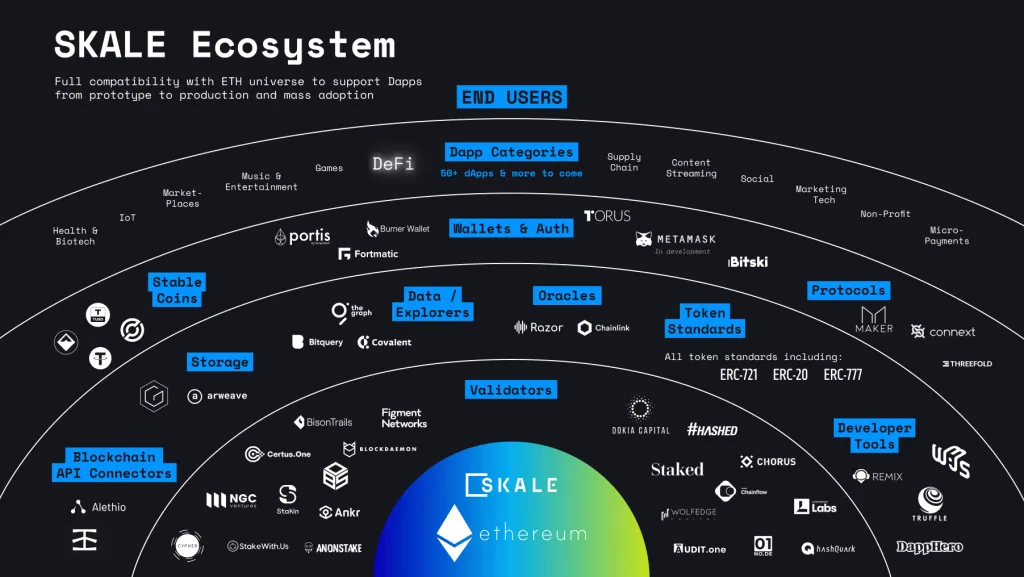What is SKALE Network? SKL Token Explained

SKALE Network is a decentralized elastic blockchain that specifically aims to scale Ethereum decentralized applications (dApps) for real-world usage. Being elastic means it is highly configurable, keeping the benefits of decentralization while removing development limitations we find on many traditional blockchains. Here we will look at what is SKALE Network, and how SKL token powers the network.
What is SKALE Network?
You should think of SKALE as a layer 2 solution as it exists above the main Ethereum blockchain. However, unlike Loopring it does not implement a zkRollup approach to speed up transactions. Instead, it uses a network of mini-chains, technically known as dynamic shards. These shards can complete token transfers and execute smart contract interactions simultaneously while operating independently from one another. Meaning that no dApp will slow down due to the high usage of another application on the network.
The network implements a Delegated Proof-of-Stake (DPoS) consensus algorithm which enables asynchronous transactions, meaning it can theoretically operate as fast as Elrond or Binance Smart Chain.
SKL Token Usage
SKALE Network is powered by its native SKL token which has the following use cases:
- Staking: token holders can stake their SKL tokens to participate in consensus. As a result, they receive rewards for improving network security.
- Payments: developers will need SKL tokens to pay for subscription access to using the elastic blockchain for their applications.
- Governance: SKALE intends to be community-driven for future development, holders will receive voting power through their tokens. Meaning token holders will be able to vote to adjust economic parameters such as the pricing for subscription fees.
Looking to the future
SKALE Network raised ~22.04M USD over three rounds of private token sales and one round of public sales. Additionally, SKL was recently listed on the Binance exchange which will help the project gain attention quickly.
The project has a clear use case, Ethereum network is not scaling well to increased usage. We’re all aware of the high network fees eating away our DeFi farming profits. Along with the general slowness making for an unfriendly user experience. To enable developers to run their Ethereum applications with high performance and low costs – it’s easy to understand how the SKALE tech can quickly become adopted. Additionally, the design choice to provide dApps with their mini-chain will look very appealing to teams as it will not sacrifice decentralization.

That being said the competition is fierce when it comes to building a blockchain capable of scaling to real-world demand. There is even a long list of projects building Layer 2 solutions for Ethereum: Loopring, Polkadot, Matic, Plasma, Loom Network… there is no clear winner! Though, as we see above, the SKALE ecosystem is ready.
